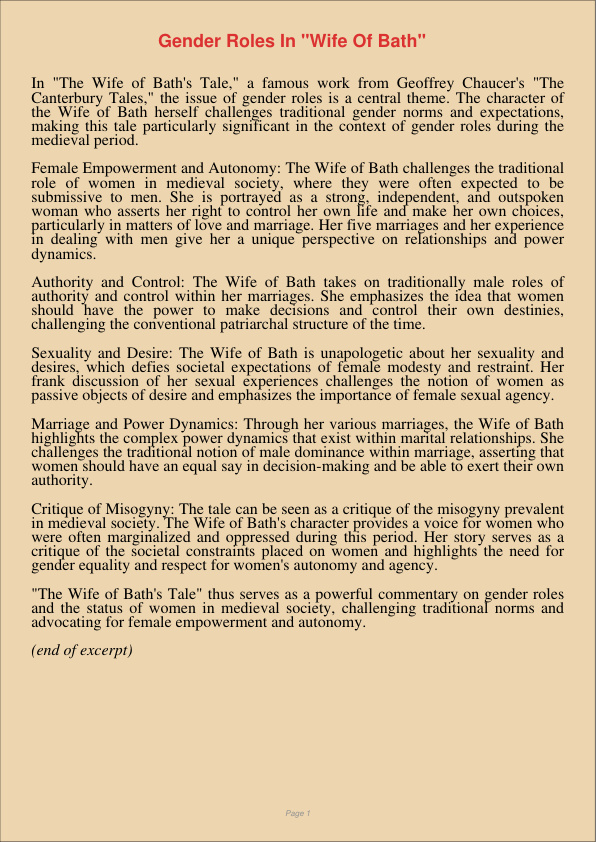Gender Roles In Wife Of Bath
Dec 31, 2023
gender roles
wife
Engineering and Construction
Philosophy
In “The Wife of Bath’s Tale,” a famous work from Geoffrey Chaucer’s “The Canterbury Tales,” the issue of gender roles is a central theme. The character of the Wife of Bath herself challenges traditional gender norms and expectations, making this tale particularly significant in the context of gender roles during the medieval period.
Female Empowerment and Autonomy: The Wife of Bath challenges the traditional role of women in medieval society, where they were often expected to be submissive to men. She is portrayed as a strong, independent, and outspoken woman who asserts her right to control her own life and make her own choices, particularly in matters of love and marriage. Her five marriages and her experience in dealing with men give her a unique perspective on relationships and power dynamics.
Authority and Control: The Wife of Bath takes on traditionally male roles of authority and control within her marriages. She emphasizes the idea that women should have the power to make decisions and control their own destinies, challenging the conventional patriarchal structure of the time.
Sexuality and Desire: The Wife of Bath is unapologetic about her sexuality and desires, which defies societal expectations of female modesty and restraint. Her frank discussion of her sexual experiences challenges the notion of women as passive objects of desire and emphasizes the importance of female sexual agency.
Marriage and Power Dynamics: Through her various marriages, the Wife of Bath highlights the complex power dynamics that exist within marital relationships. She challenges the traditional notion of male dominance within marriage, asserting that women should have an equal say in decision-making and be able to exert their own authority.
Critique of Misogyny: The tale can be seen as a critique of the misogyny prevalent in medieval society. The Wife of Bath’s character provides a voice for women who were often marginalized and oppressed during this period. Her story serves as a critique of the societal constraints placed on women and highlights the need for gender equality and respect for women’s autonomy and agency.
“The Wife of Bath’s Tale” thus serves as a powerful commentary on gender roles and the status of women in medieval society, challenging traditional norms and advocating for female empowerment and autonomy.
